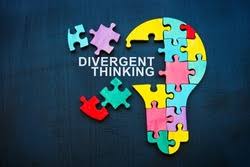ACT and SAT word analysis Part 4
“It makes much more sense to provide all students with knowledge needed to master [the sound structure of the American] English [language] (Eide, 2012; 17). Keeping this in the forefront of my thinking and lesson planning, I will analyze the word catalyst and connect it to the Four-Part Processing Model (Seidenberg & McClelland, 1989), which illustrates how students read or identify words.
Part 1
For the lower-level processors (i.e., orthographic & phonological), Moats (2020) asserts that “one can use phonic or dictionary symbols to transcribe the phonetic properties of words, but the disadvantage of such a phonic representation system is that many speech sounds must then be presented with letter combinations…” (pg. 32). We will be analyzing the word catalyst on page 193 in the Merriam-Webster’s Collegiate Dictionary 11th edition. The phonetic transcription is \ˈka-tə-ləst\
1st sound | 2nd sound | 3rd sound | 4th sound | 5th sound | 6th sound | 7th sound | 8th sound | |
Phonemes | /k/ | /ă/ | /ə/ | /ə/ | | |||
Graphemes | c | a | t | a | l | y | s | t |
These points address what we hear and see when using the dictionary’s phonetic symbols (i.e., less than dark print or pronunciation):
· The 1st most common to spell the sound /k/ is with the letter c.
o Note: the letter c sounds like /k/ when it is followed by a,o, or u.
· The 2nd most common way to spell the schwa sound is with the letter a
o Note: “…schwa can be spelled with any of the vowel letters in standard orthography, so students must learn the spelling of vowels on the basis of other, related words or by memorization” (Moats, 2022; pg. 45).
· The 12th most common way to spell the schwa sound is with the letter y as in syringe.
· There are eight phonemes, which are represented by eight single letters.
Part 2
At this stage, students are then exposed to multiple meanings of the vocabulary word, which strengthens the meaning processor through accessing the dictionary definitions. Points to consider when analyzing this word in the dictionary:
· The word is from catalysis (i.e., katalysis – dissolution, katalyein to dissolve, kata + lyein to dissolve, release – more at lose (pg. 193).
· We know that cata- is a word forming element (i.e., prefix) that means down (pg. 193).
· The root is *leu- "to loosen, divide, cut apart"
A reader/user of the Webster online dictionary will notice that a historical perspective is provided as well. For instance, the word was described as someone or something that rapidly causes transformation or action. By equipping students with this type of instruction, they gain fundamental linguistic knowledge through critically analyzing words.
Point 3
Therefore, when we critically reflect on the word’s definition and consider all the elements learned, we can put the word into perspective (i.e., context) with the following activity.
Direction: read the sentence and write a definition or synonym for the word ‘catalyst’. Use contexts clue to help you determine the words meaning.
Sentence 1: Dr. Robinson’s negative experience with reading was the catalyst for his lifelong interest in educational and teacher reform.
Can you think of a sentence using the word?
Have any of you heard of a catalytic converter? Does the meaning of ‘catalyst’ relate to function of a catalytic converter?
References:
Eide, D. (2011). Uncovering the Logic of English: A Common-Sense Solution to America's Literacy Crisis. Logic of English, Inc.
Moats, L. C. (2020). Speech to Print. Language Essentials for Teachers. Paul H.
Seidenberg, M. S., & McClelland, J. L. (1989). A distributed, developmental model of word recognition and naming. Psychological Review, 96(4), 523–568.




Comments
Post a Comment